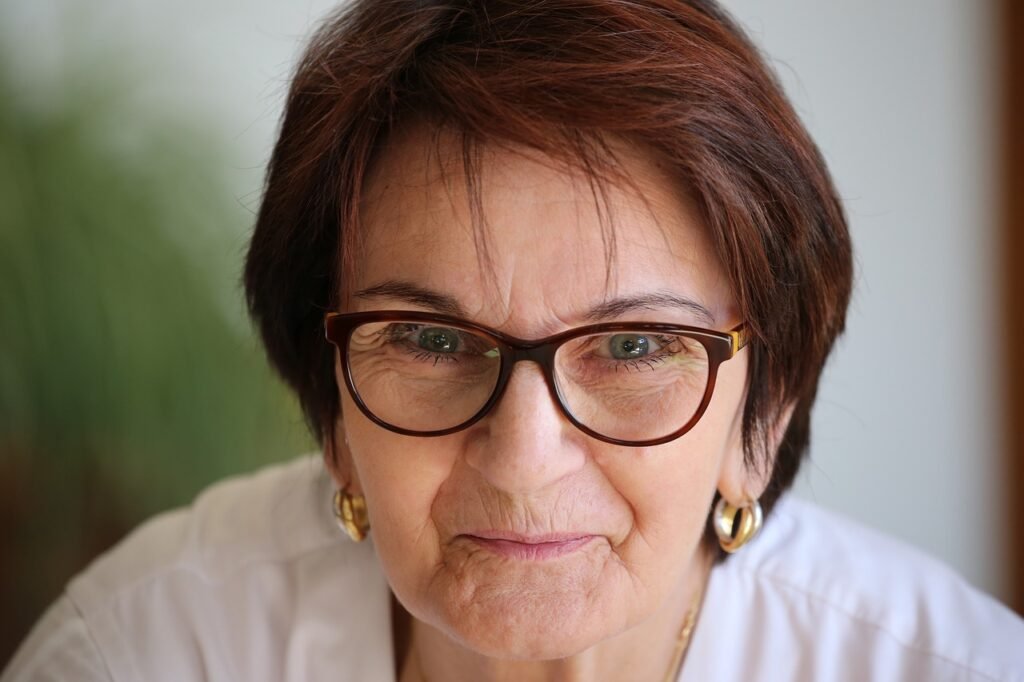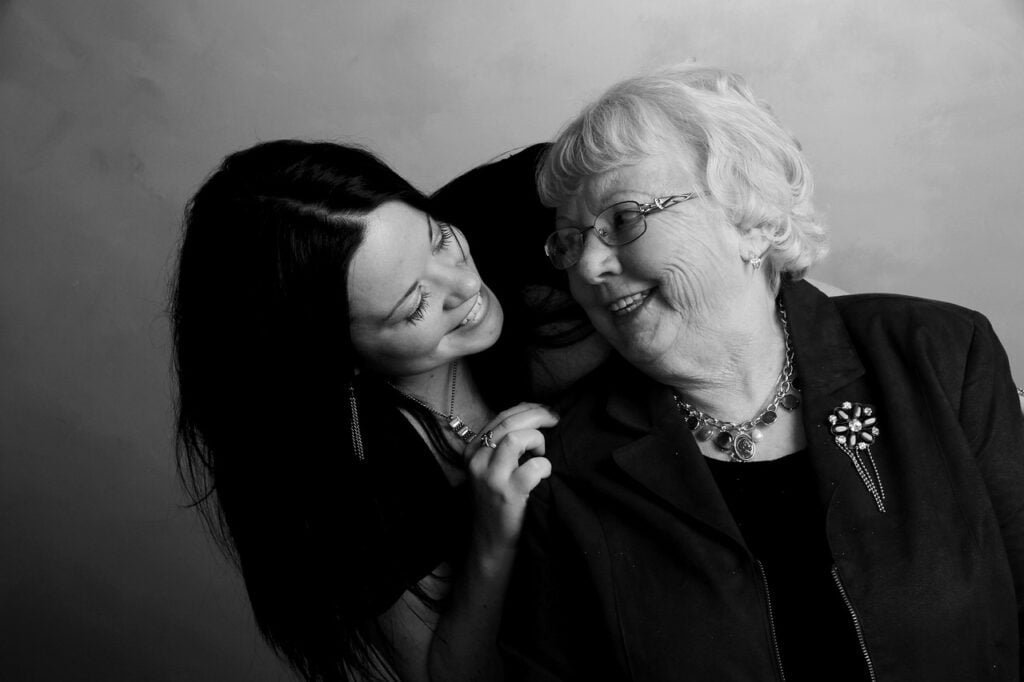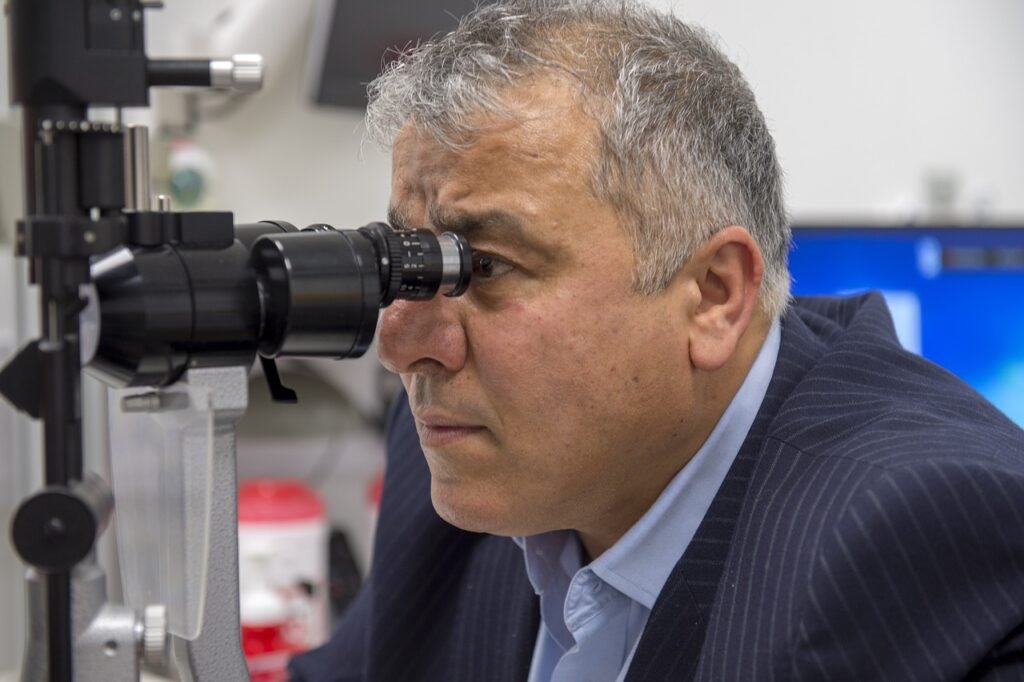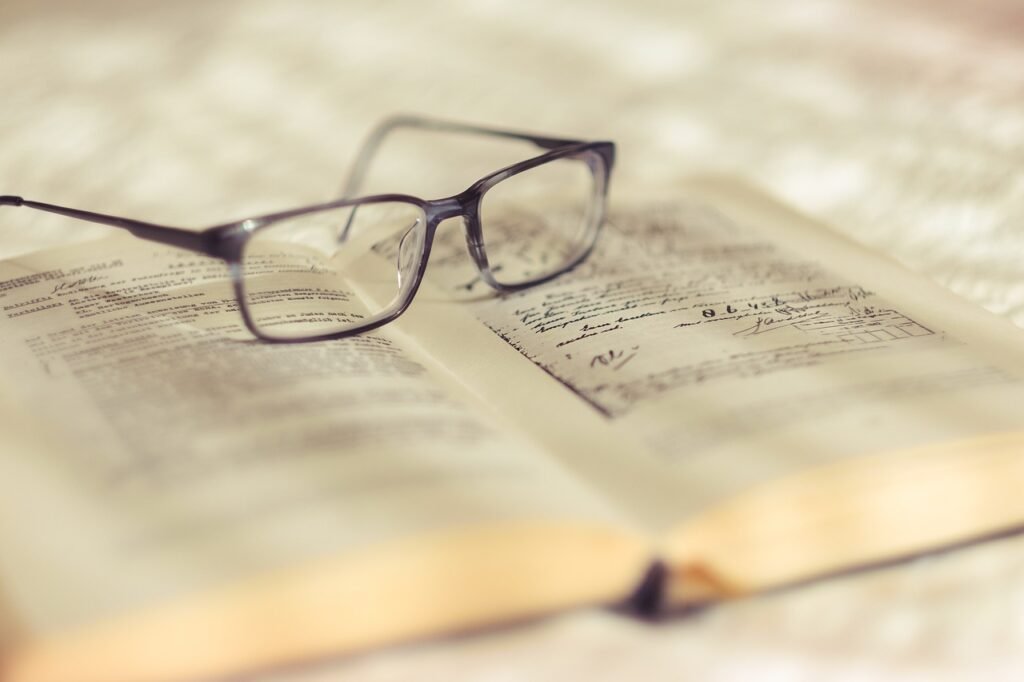As we get older, our bodies go through many changes. One part that often changes is our eyes. Many older adults find that their vision isn’t as sharp as it used to be. This deterioration is normal, but sometimes, it can be a sign that you have one of the common eye conditions in elderly.
Vision problems in older adults are more prevalent than you might think. According to the World Health Organization, approximately 2.2 billion people worldwide have a vision impairment, with a significant portion being over the age of 50. These statistics make understanding common eye conditions in elderly people crucial for both seniors and their caregivers.
Vision Problems In Older Adults
From age-related macular degeneration to cataracts glaucoma, to diabetic retinopathy, these common eye conditions in elderly can significantly affect an older person’s daily life. However, with proper knowledge and care, many of these conditions can be managed effectively, allowing seniors to maintain their Independence and enjoy a high quality of life.
In this blog post, we’ll delve into the most common eye conditions in elderly individuals, discussing their causes, symptoms, and available treatments. We’ll explore how these conditions can impact daily activities and offer practical advice on maintaining eye health in later years.
Whether you’re a senior yourself, caring for an older loved one, or simply interested in learning more about common eye conditions in elderly, this guide will provide valuable insights. We’ll cover everything from the importance of regular eye exams to lifestyle changes that can promote better eye health.
Remember, while common eye conditions in elderly people are widespread, they don’t have to be debilitating. With early detection, proper treatment, and ongoing care, many seniors can preserve their vision and continue to enjoy the visual wonders of the world around them.
So, let’s embark on this journey to understand the aging eye, the challenges it may face, and how we can best care for our vision as we grow older. Whether you’re dealing with presbyopia, worried about glaucoma, or simply want to maintain healthy eyes as you age, this guide has something for you.
Join us as we explore the world of senior eye care, uncovering the facts about common eye conditions in elderly individuals and learning how to keep our eyes healthy well into our golden years.
Table of Contents
- Why Eye Health Matters for Seniors
- 8 Common Eye Conditions in Elderly.
- 1. Presbyopia: The Need for Reading Glasses
- 2. Cataracts: When the Lens Gets Cloudy
- 3. Glaucoma: The "Silent Thief of Sight"
- 4. Age-Related Macular Degeneration (AMD): Problems with Central Vision
- 5. Diabetic Retinopathy: When Diabetes Affects the Eyes
- 6. Dry Eye Syndrome: When Your Eyes Don't Make Enough Tears
- 7. Floaters and Flashes: Those Spots and Lights in Your Vision
- 8. Eyelid Problems: Droopy Lids and Turning Lids
- Tips for Maintaining Eye Health in Older Adults
- Get regular eye exams to Detect Common Eye Conditions in Elderly
- Eat a healthy diet to Prevent Common Eye Conditions in Elderly
- Don't smoke and prevent common eye conditions in elderly
- Wear sunglasses
- Stay active to prevent the common eye conditions in elderly
- Manage other health conditions
- Use good lighting
- Take screen breaks
- Keep your hands clean
- Know your family history
- Coping with Vision Changes of Common Eye Conditions in Elderly
- Conclusion
Why Eye Health Matters for Seniors

Before we delve into the specific common eye conditions in elderly individuals, it’s crucial to understand why maintaining good eye health is so important for older adults.
Our eyes are our windows to the world, and as we age, preserving our vision becomes increasingly vital. Good eye health and vision contribute significantly to an older person’s overall quality of life, Independence, and well-being.
Let’s explore in detail why eye health is so critical for seniors:
Maintaining Independence
Good vision is fundamental to maintaining Independence in later years. Many of the common eye conditions in elderly people can threaten this Independence if left untreated. Being able to see well helps older adults:
- Perform daily tasks on their own, such as reading mail, managing medications, and paying bills
- Cook and prepare meals safely
- Drive or use public transportation
- Shop for groceries and other necessities
- Engage in hobbies and leisure activities
When seniors can perform these tasks independently, it boosts their confidence and sense of self-reliance, contributing to better mental health and life satisfaction.
Preventing Accidents and Injuries
One of the most critical reasons for addressing common eye conditions in elderly individuals is safety. Good eyesight plays a crucial role in the following:
- Preventing falls: Falls are a leading cause of injury among seniors, and poor vision can significantly increase fall risk.
- Avoiding household accidents: Clear vision helps seniors navigate their homes safely, reducing the risk of bumping into furniture or tripping over objects.
- Safe medication management: Good eyesight ensures seniors can read medication labels correctly, preventing potentially dangerous dosing errors.
- Kitchen safety: Clear vision is essential for safely using kitchen appliances and handling hot foods and liquids.
By maintaining good eye health and addressing any vision problems promptly, seniors can significantly reduce their risk of accidents and injuries.
Enhancing Quality of Life
Many of life’s pleasures rely heavily on our ability to see clearly. Common eye conditions in elderly people can interfere with activities that bring joy and fulfillment. Good vision allows seniors to:
- Read books, newspapers, and magazines
- Watch television and movies
- Use computers and smartphones to stay connected online
- Enjoy nature and outdoor activities
- Appreciate art and visit museums
- Engage in crafts and hobbies like knitting, painting, or woodworking
- See the faces of loved ones clearly, especially grandchildren
When seniors can fully participate in these activities, it contributes to a more active, engaged, and satisfying lifestyle.
Staying Socially Connected
Social connections are vital for mental health and cognitive function as we age. However, many common eye conditions in elderly individuals can lead to social isolation. Good vision helps seniors:
- Recognize faces, which is crucial for social interactions
- Read text messages, emails, and social media posts
- Participate in group activities and social events
- Navigate social settings comfortably
- Use video calling platforms to stay in touch with distant family and friends
When seniors can see clearly, they’re more likely to maintain and nurture their social relationships, reducing the risk of loneliness and depression.
Supporting Cognitive Health
There’s a strong connection between vision and cognitive health. Some studies suggest that common eye conditions in elderly people, such as cataracts and age-related macular degeneration, may be associated with an increased risk of cognitive decline. Good vision supports cognitive health by:
- Enabling seniors to engage in mentally stimulating activities like reading and puzzles
- Allowing for full participation in social interactions, which can help maintain cognitive function
- Reducing the cognitive load required for everyday tasks, freeing up mental resources for other activities
Maintaining Physical Health
Good eye health can also contribute to overall physical health in several ways:
- Enabling seniors to read nutritional information and prepare healthy meals
- Allowing for safe exercise and physical activity
- Ensuring seniors can read and follow medication instructions correctly
- Facilitating participation in doctor’s appointments and health screenings
Preserving Emotional Well-being
Vision plays a significant role in emotional health. Common eye conditions in elderly individuals can lead to:
- Frustration and anxiety over the inability to perform familiar tasks
- Depression due to reduced Independence or social isolation
- Loss of self-esteem if unable to maintain personal appearance or home environment
By maintaining good eye health, seniors can preserve their sense of self and emotional well-being.
Supporting Overall Quality of Life
Ultimately, good eye health contributes to an overall higher quality of life for seniors. It allows them to:
- Maintain their daily routines and lifestyle
- Continue pursuing their interests and passions
- Stay engaged with their community
- Preserve their sense of identity and purpose
8 Common Eye Conditions in Elderly.

1. Presbyopia: The Need for Reading Glasses
What is it?
Presbyopia is a normal part of aging that makes it hard to focus on things up close. It usually starts to happen around age 40 and gets worse until about age 65.
How does it affect vision?
People with presbyopia might:
- Have trouble reading small print
- Need to hold books or phones farther away to see clearly
- Get headaches or eye strain when doing close-up work
What can help?
The good news is that presbyopia is easy to fix. Most people just need reading glasses. You can buy these at many stores without a prescription. Some people might need bifocals or progressive lenses, which their eye doctor can prescribe.
2. Cataracts: When the Lens Gets Cloudy
What is it?
A cataract is when the lens inside your eye gets cloudy. It’s very common in older adults. In fact, more than half of all Americans over 80 have cataracts or have had cataract surgery.
How does it affect vision?
Cataracts can make your vision:
- Blurry or hazy
- Less colorful (things might look yellowish or brownish)
- Worse at night or in dim light
- More sensitive to glare from lights
What can help?
In the early stages, stronger glasses or better lighting might help. But if cataracts start to really affect daily life, surgery can remove them. Cataract surgery is very common and usually very successful. The cloudy lens is replaced with a clear artificial one, and most people see much better afterwards.
3. Glaucoma: The “Silent Thief of Sight”
What is it?
Glaucoma is a group of eye diseases that damage the optic nerve, which connects your eye to your brain. It’s often called the “silent thief of sight” because it can cause vision loss without any obvious symptoms at first.
How does it affect vision?
Glaucoma usually affects side (peripheral) vision first. By the time someone notices vision problems, a lot of damage might already be done. That’s why regular eye check-ups are so important for older adults.
What can help?
While there’s no cure for glaucoma, early treatment can slow it down and help prevent vision loss. Treatment might include:
- Eye drops to lower pressure in the eye
- Laser treatment
- Surgery in some cases
4. Age-Related Macular Degeneration (AMD): Problems with Central Vision
What is it?
AMD affects the macula, the part of your eye that lets you see fine details. It’s a leading cause of vision loss in older adults.
How does it affect vision?
AMD can cause:
- Blurry or wavy central vision
- Dark or empty areas in your central vision
- Trouble seeing colors clearly
- Difficulty reading or recognizing faces
There are two types of AMD: dry and wet. Dry AMD is more common and progresses slowly. Wet AMD is less common but can cause faster vision loss.
What can help?
For dry AMD, there’s no specific treatment, but a healthy diet rich in certain vitamins and minerals might help slow it down. For wet AMD, some medications can be injected into the eye to slow or stop vision loss.
5. Diabetic Retinopathy: When Diabetes Affects the Eyes
What is it?
Diabetic retinopathy is a complication of diabetes that damages the blood vessels in the retina (the light-sensitive tissue at the back of the eye).
How does it affect vision?
In the early stages, there might be no symptoms. As it progresses, it can cause:
- Blurry vision
- Dark or empty areas in your vision
- Difficulty seeing colors
- Vision loss
What can help?
The best way to prevent or slow down diabetic retinopathy is to keep diabetes under control. Regular eye exams are crucial because early treatment can help prevent vision loss. Treatment might include laser treatment, injections into the eye, or surgery in advanced cases.
6. Dry Eye Syndrome: When Your Eyes Don’t Make Enough Tears
What is it?
Dry eye syndrome happens when your eyes don’t make enough tears or the tears evaporate too quickly. It’s more common in older adults, especially women after menopause.
How does it affect vision?
Dry eyes can cause:
- A burning or stinging feeling in your eyes
- Feeling like there’s something in your eye
- Red eyes
- Sensitivity to light
- Blurry vision that comes and goes
What can help?
There are many treatments for dry eyes, including:
- Artificial tears (eye drops)
- Prescription eye drops that help your eyes make more tears
- Tiny plugs placed in the tear ducts to keep tears in your eyes longer
- In some cases, a procedure to unblock oil glands in your eyelids
7. Floaters and Flashes: Those Spots and Lights in Your Vision
What are they?
Floaters are tiny specks or threads that seem to float across your vision. Flashes are brief sparkles of light in your vision. Both are common as we get older.
How do they affect vision?
Floaters and flashes are usually harmless and don’t affect vision much. But sometimes, they can be a sign of a more serious problem, like a detached retina.
What can help?
Most of the time, floaters and flashes don’t need treatment. Your brain learns to ignore them over time. But if you suddenly see a lot of new floaters, especially with flashes or a “curtain” over part of your vision, see an eye doctor right away. These kinds of floaters could be a sign of a detached retina, which needs immediate treatment.
8. Eyelid Problems: Droopy Lids and Turning Lids
What are they?
As we age, the skin and muscles around our eyes can change. This change can lead to problems like:
- Ptosis: droopy upper eyelids
- Ectropion: lower eyelids that turn outward
- Entropion: eyelids that turn inward
How do they affect vision?
These conditions can cause:
- Irritation and discomfort
- Excessive tearing
- Reduced vision if the eyelid covers part of the pupil
- Increased risk of eye infections
What can help?
Eye drops or ointments might help mild cases. In more severe cases, surgery can fix the position of the eyelids.
Tips for Maintaining Eye Health in Older Adults

Now that we’ve covered some common eye conditions in elderly people, let’s talk about how to keep your eyes as healthy as possible as you age:
Get regular eye exams to Detect Common Eye Conditions in Elderly
Many eye problems don’t have early symptoms, so regular check-ups are crucial. Most adults over 60 should have a comprehensive eye exam every year or two.
Eat a healthy diet to Prevent Common Eye Conditions in Elderly
Foods rich in vitamins C and E, zinc, lutein, zeaxanthin, and omega-3 fatty acids may help prevent age-related eye problems. Good choices include:
- Green leafy vegetables like spinach and kale
- Fish like salmon and tuna
- Nuts and seeds
- Citrus fruits
- Eggs
Don’t smoke and prevent common eye conditions in elderly
Smoking increases the risk of many eye problems, including cataracts and AMD.
Wear sunglasses
Protect your eyes from harmful UV rays when you’re outside.
Stay active to prevent the common eye conditions in elderly
Regular exercise can help prevent conditions that can lead to eye problems, like diabetes and high blood pressure.
Manage other health conditions
Diseases like diabetes and high blood pressure can affect your eyes, so keep them under control.
Use good lighting
Bright, even lighting can help reduce eye strain.
Take screen breaks
If you use a computer or phone a lot, follow the 20-20-20 rule: Every 20 minutes, look at something 20 feet away for at least 20 seconds.
Keep your hands clean
Wash your hands often to avoid spreading germs to your eyes.
Know your family history
Many eye conditions run in families, so knowing your family’s eye health history can help you and your doctor watch for early signs of problems.
When to See an Eye Doctor – Symptoms of Common Eye Conditions in Elderly
While regular check-ups are important, there are times when you should see an eye doctor right away. Get medical help if you have:
- Sudden vision loss
- Sudden blurry vision that doesn’t go away
- Eye pain
- Double vision
- Flashes of light
- Circles (halos) around lights
- Swelling or redness of the eye or eyelid
Remember, many eye conditions can be treated more easily if they’re caught early. Don’t ignore changes in your vision or wait for your next scheduled check-up if you’re having problems.
Coping with Vision Changes of Common Eye Conditions in Elderly

If you’re experiencing vision changes or have been diagnosed with an eye condition, remember that you’re not alone. Here are some tips for coping:
- Use low vision aids: Many tools can help, like magnifying glasses, large-print books, or talking watches.
- Improve your home lighting: Good lighting can make a big difference. Use bright, even lighting and reduce glare where possible.
- Organize your home: Keep things in the same place so you can find them easily. Use contrasting colors to make objects easier to see.
- Ask for help when you need it: Don’t be afraid to ask family, friends, or professionals for help with tasks that have become difficult.
- Stay connected: Vision problems can sometimes lead to isolation. Make an effort to stay in touch with friends and family, and consider joining a support group for people with similar eye conditions.
- Stay positive: Remember that there are many ways to adapt to vision changes and still enjoy life.
Conclusion
As we’ve seen, many common eye conditions can affect older adults. Some, like presbyopia, are a normal part of aging. Others, like glaucoma or AMD, are more serious but can often be managed with proper care.
The key to maintaining good eye health as you age is to be proactive. Get regular eye exams, eat a healthy diet, protect your eyes from the sun, and see a doctor promptly if you notice any changes in your vision.
Remember, your eyes are precious. They let you see the faces of your loved ones, enjoy beautiful sights, and maintain your Independence. By taking good care of them, you can help ensure that they continue to serve you well throughout your golden years.
If you have any concerns about your eye health, don’t hesitate to talk to your doctor or an eye care professional. They can give you personalized advice and help you keep your eyes as healthy as possible.
Here’s to clear vision and healthy eyes, no matter what your age!


